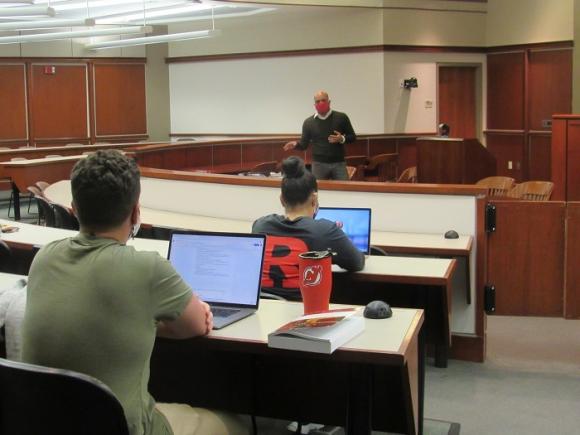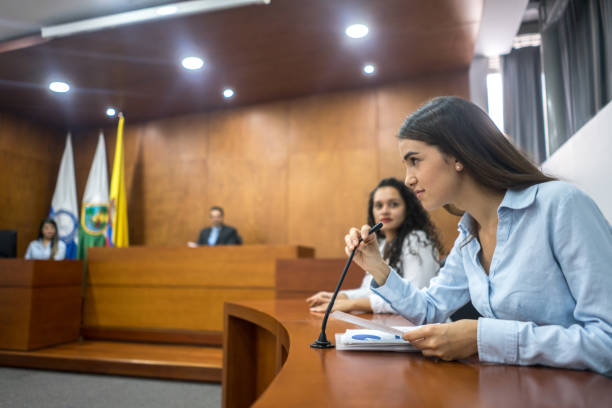Browsing the Complexities of Test Presentations: Tips for Seamless Shipment and Compelling Arguments
In the world of lawful proceedings, the art of trial discussion stands as an important determinant of success. As attorneys browse the detailed web of court dynamics, the capacity to flawlessly supply debates and evidence while astounding the court's attention ends up being critical. The complexities integral in test presentations require a fragile balance of finesse, ability, and strategy. By refining strategies that make certain a sleek shipment and crafting engaging arguments that reverberate with the audience, legal experts can considerably improve their advocacy. In a world where persuasion preponderates, mastering the details of trial discussions is not simply an option but a requirement for those seeking to prevail in the court room.

Understanding Trial Goals
To efficiently browse a trial, it is critical to have a clear understanding of the goals that need to be accomplished. Before stepping right into the court room, legal groups should define their objectives and preferred end results. These purposes work as guiding principles throughout the test, forming approaches and affecting decision-making procedures.
Comprehending trial goals includes an extensive analysis of the situation, legal criteria, and the client's benefits. Trial Presentations. It needs a precise evaluation of the facts, recognizing key concerns, and anticipating prospective difficulties. By setting specific and measurable goals, lawyers can tailor their debates and presentations to straighten with the preferred results
Additionally, a clear grasp of test purposes allows lawful groups to focus on evidence, witnesses, and legal disagreements properly. It permits the development of a systematic narrative that resonates with the judge and court, strengthening the overall situation discussion.

Organizing Evidence Effectively
Having a clear understanding of trial purposes lays the structure for organizing proof efficiently in lawful procedures - Trial Presentations. By lining up the presentation of proof with the preferred outcomes of the test, legal teams can reinforce their debates and boost their persuasiveness. One important facet of arranging evidence is categorization. Grouping evidence based upon motifs or significance to specific lawful components can help streamline the presentation and make complicated information a lot more digestible for the judge or jury.
One more crucial element in arranging proof successfully is developing a rational flow. Providing evidence in a meaningful and consecutive way can help build an engaging story that sustains the lawful arguments being made. Furthermore, making use of aesthetic help such as charts, timelines, or graphes can better boost the company of proof and assist in clearing up complex connections or sequences of occasions.
Furthermore, making sure that all evidence offered is relevant and permissible to the case is necessary. Inadmissible or unnecessary proof can diminish the stamina of the debate and potentially harm the reputation of the here and now party. For that reason, a thorough review and option procedure should be carried out to include just the most impactful and legitimately sound evidence in the test discussion.
Crafting Convincing Stories
Crafting engaging stories plays a pivotal role in offering persuasive disagreements throughout legal proceedings. A well-crafted story has the power to captivate the target market, evoke emotions, and ultimately persuade the decision for today party. When building a story for a test presentation, it is important to develop a clear story that highlights key points and connects them in a coherent fashion. Begin by laying out the facts of the situation in a More Info compelling way, making certain that the series of occasions is easy to comply with. Present personalities properly, giving history info that helps the audience understand their motivations and activities. In addition, including dazzling descriptions and engaging language can bring the story to life, making it much more memorable for the court and jury. By weaving with each other evidence, testament, and lawful disagreements into a natural and convincing narrative, attorneys can effectively support for their clients and enhance the possibility of a positive outcome in the court.
Mastering Visual Help
Effective use aesthetic help is essential to improving the influence and clarity of trial discussions. Aesthetic aids, when used purposefully, have the power to simplify complicated details, enhance essential points, and leave a long lasting impression on the court and court. To grasp visual aids in test discussions, it is important to guarantee that they are clear, concise, and appropriate to the disagreements being made.
When incorporating aesthetic help, such as charts, timelines, graphs, or photographs, into a trial presentation, it is necessary to maintain them aesthetically appealing yet specialist. The visuals need to enhance the spoken debates, giving a graph of the details being discussed without frustrating the target market with unneeded information.
In addition, exercising with the aesthetic help in advance is critical to make certain a smooth distribution throughout the trial. Familiarizing oneself with the content, transitions, and timings of each visual aid can help maintain the flow of the presentation and prevent technical problems that might arise.
Providing Impactful Closing Disagreements
A compelling closing debate works as the end result of a trial presentation, enveloping the core story and convincing the judge and court in the direction of a positive decision. To supply an impactful closing debate, it is vital to succinctly evaluate bottom lines, highlight the strengths of your case, and resolve any type of weaknesses in a critical way. Begin by describing the main disagreements that support your customer's setting, emphasizing why the proof presented throughout the test supports your narrative. It is vital to develop a sense of communication and clarity, leading the judge and court towards the desired final thought.
Additionally, including psychological appeal can additionally strengthen your closing disagreement. By humanizing the instance and connecting on a personal level with the decision-makers, you can stimulate compassion and understanding, influencing their understanding of the realities provided. In addition, reiterating the legal requirements that have to be met for a beneficial judgment can enhance the validity of your position. Eventually, a well-crafted closing debate need to leave a lasting perception, engaging the discretionary to regulation in your customer's favor.
Conclusion
In final thought, grasping trial presentations includes comprehending goals, organizing top article evidence, crafting narratives, utilizing visual aids, and supplying impactful closing debates. By applying these strategies efficiently, attorneys can present their case seamlessly and make compelling debates in the court room. It is critical to browse the intricacies of trial presentations with accuracy and ability to accomplish success click here to read in legal proceedings.
By aligning the discussion of proof with the wanted results of the trial, legal groups can enhance their arguments and enhance their persuasiveness (Trial Presentations). To understand aesthetic aids in trial discussions, it is important to guarantee that they are clear, concise, and pertinent to the disagreements being made
An engaging closing disagreement serves as the end result of a test presentation, enveloping the core narrative and persuading the court and jury towards a desirable decision. Begin by outlining the major disagreements that sustain your customer's position, emphasizing why the proof provided throughout the test supports your story.In final thought, mastering test presentations entails understanding purposes, organizing proof, crafting narratives, making use of aesthetic help, and supplying impactful closing disagreements.